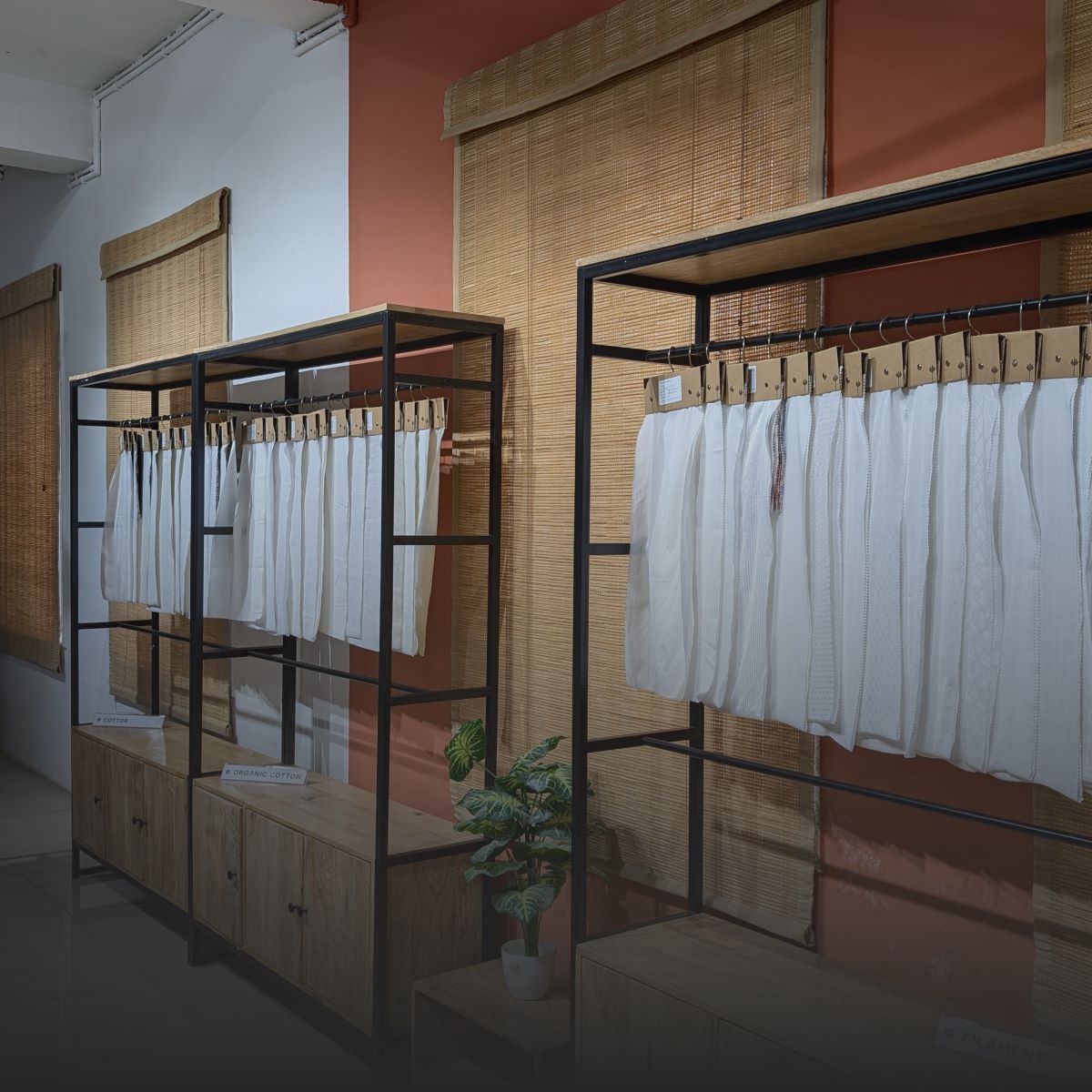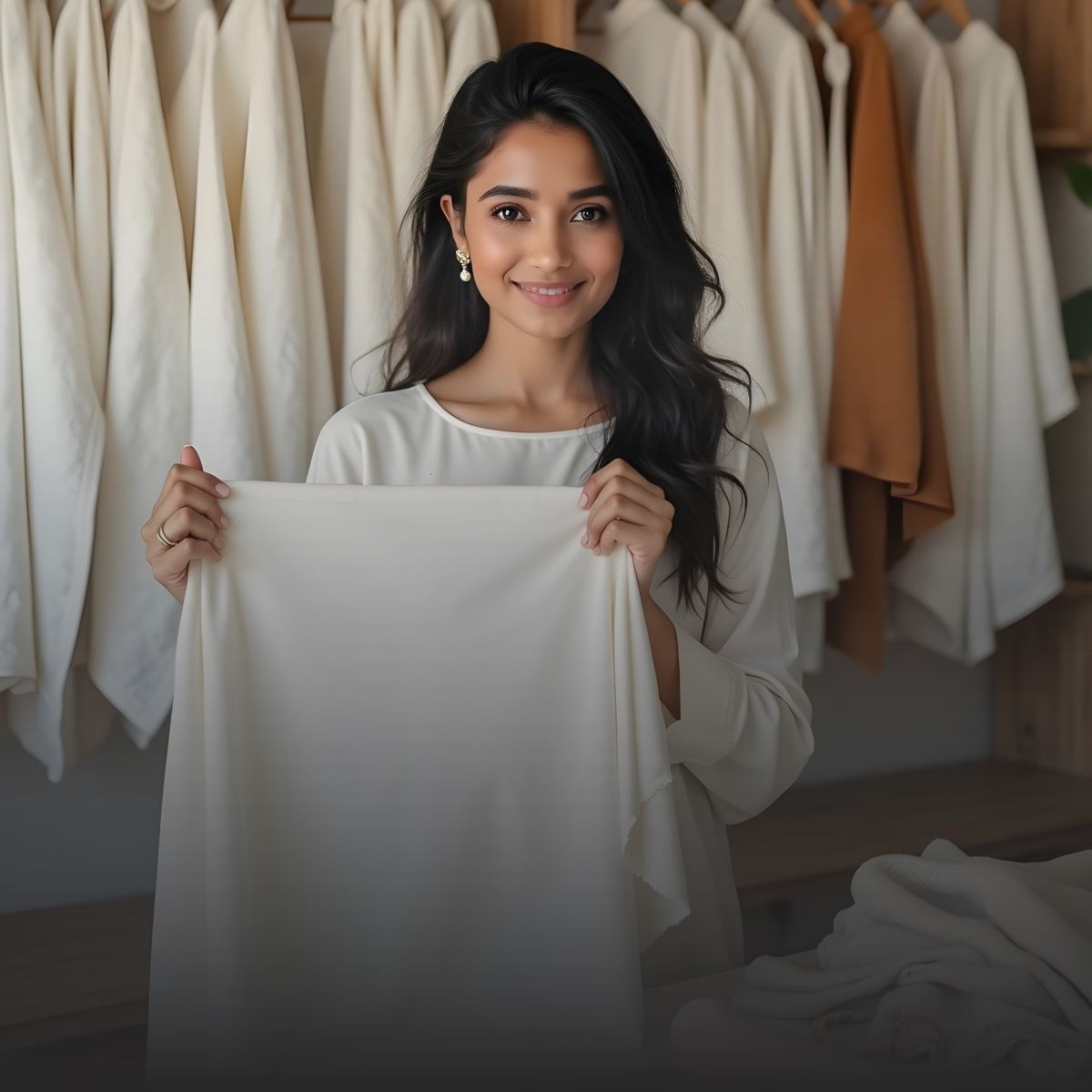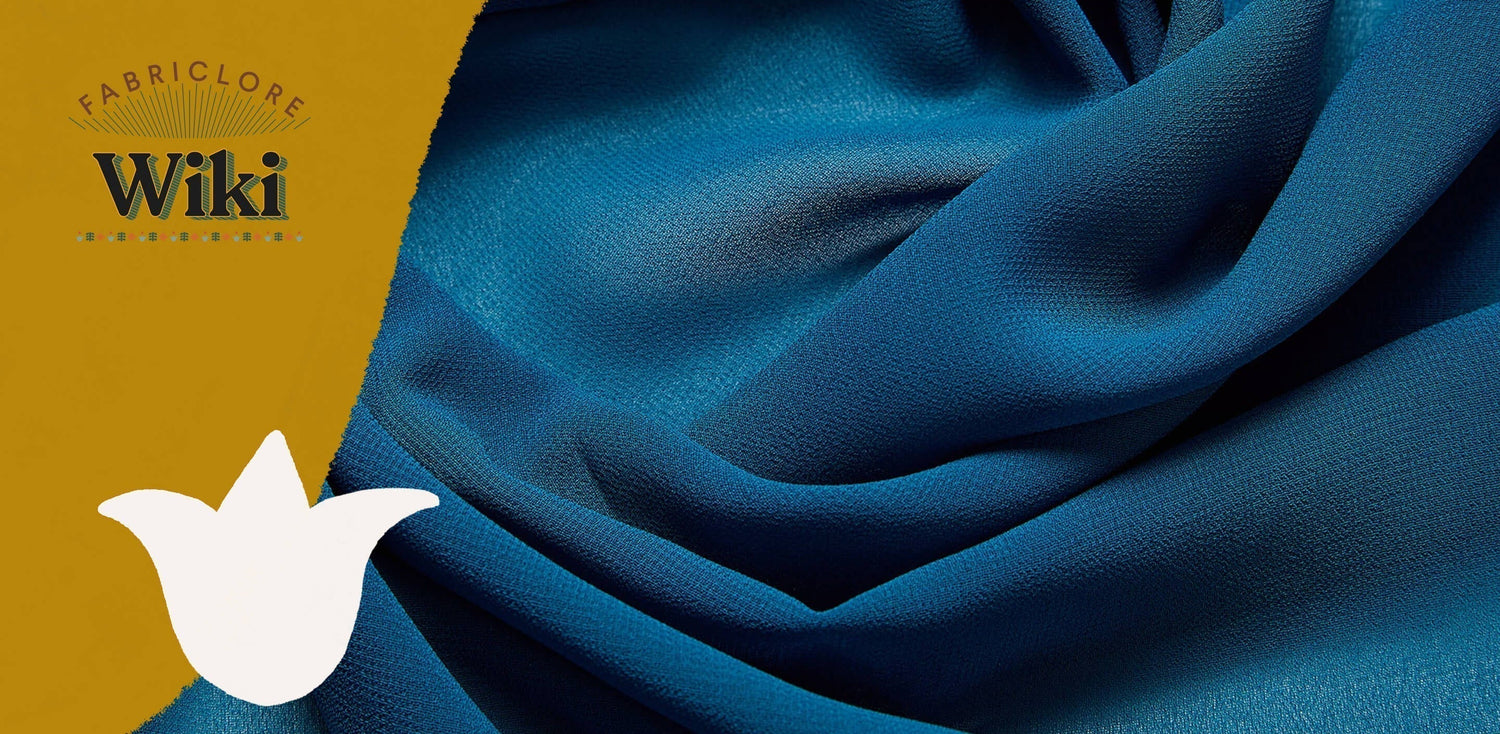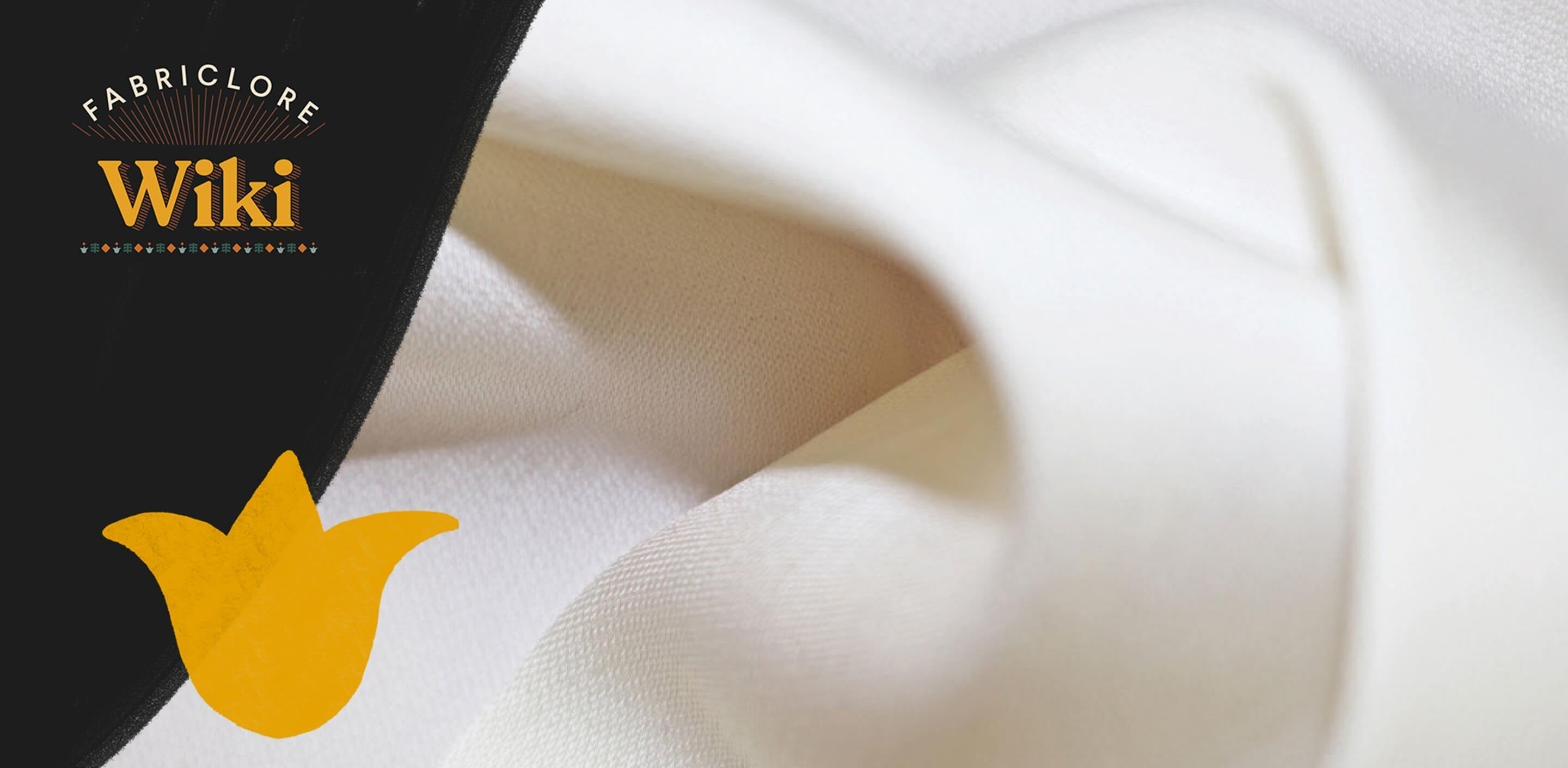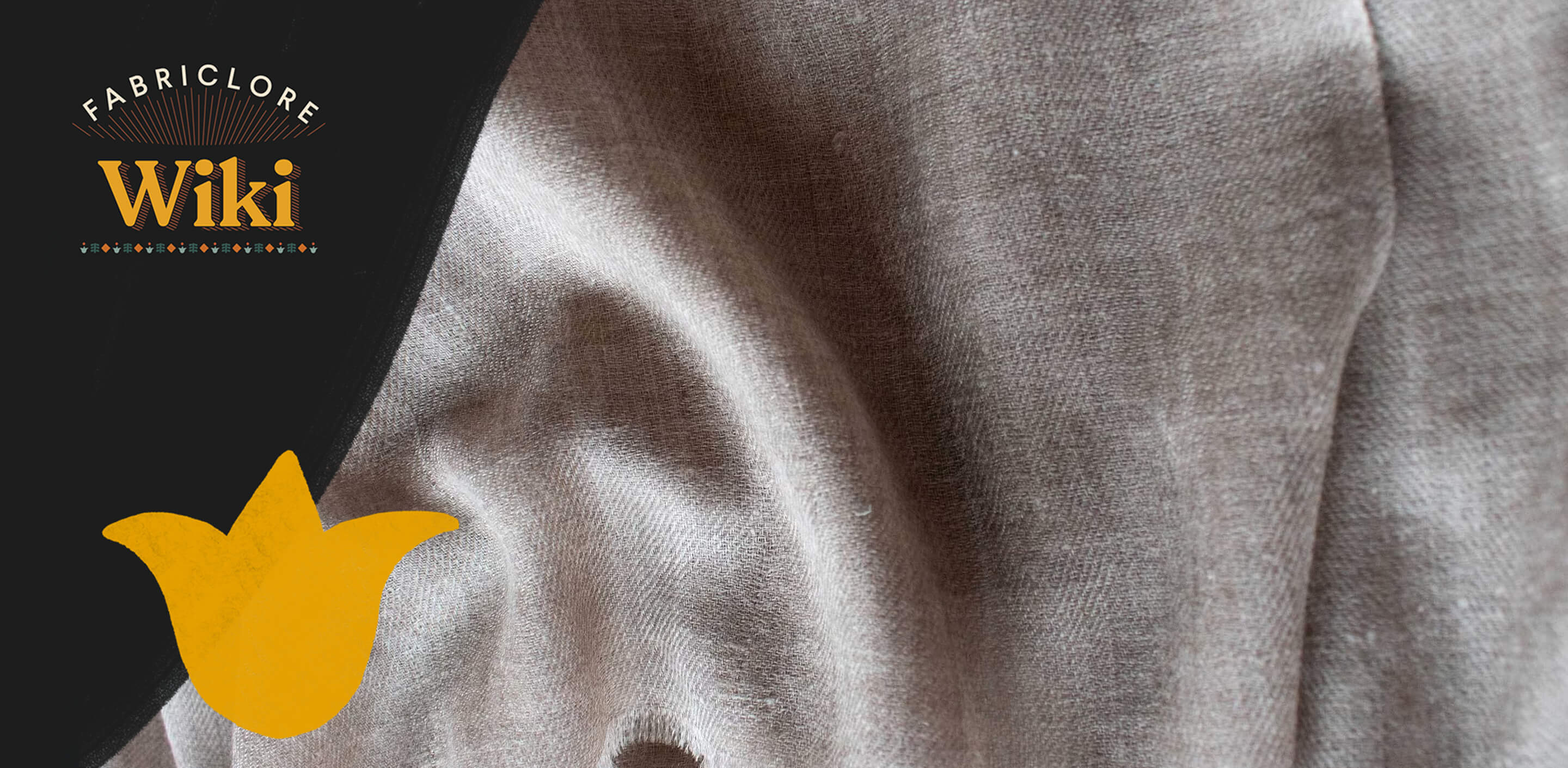Souffle fabric has become a modern favorite in the fashion and textile industries, loved for its light feel, graceful drape, and understated elegance. Most Western clothes are made of this semi-sheer fabric, a mix of comfort and fabulous fashion.
But what does souffle cloth mean? Where did it come from, and why are designers and stylists using it so often? We'll go over everything you need to know about souffle fabric in this piece, including how it's made, the different types of it, and some of the most common ways it's used in modern design.
What Is Souffle Fabric?

Souffle cloth has a smooth texture, soft drape, and breathable quality and is light and semi-sheer. Souffle fabric is often made from synthetic fibres like polyester or blended with silk. It is used a lot in high-fashion clothes that must be structured and flowy.
Origin And Early Use (Old)
The name souffle comes from the French word souffle, which means to puff. This is because the fabric is airy and light. This fabric, which was first made by the textile company Bianchini-Férier, became popular in the middle of the 20th century because of its delicate structure and almost sheer look. It was thought to be very expensive then and perfect for high-fashion clothes like skirts and layered dresses.
But the cloth had a significant flaw: it was highly flammable. It wasn't used very often and eventually fell out of style. Because of this, it was taken out of many sets and is now hard to find in stores.
Modern Interpretation & Usage (Updated)
Today, souffle fabric refers to a broader range of light, airy synthetic blends, especially polyester-based fabrics, with the same flowy look and soft drape as the original soufflé.
These newer forms are less flammable, cheaper, and are commonly used in sarees, tunics, scarves, and wedding dresses. Designers and textile companies now use these modern names to promote semi-sheer, open fabrics that look great on slim bodies. Even though this isn't the original souffle, it continues to inspire romantic and girly patterns in today's fabric business.
Fabric Composition & Weaving

Polyester yarns are mainly used to make souffles, but blends with silk or nylon are also popular. It has a slightly crisp but soft feel because it is either woven or stitched with fine yarns that are tightly twisted. The weaving design makes the fabric flow beautifully while still strong enough to hold layers or pleats.
How Souffle Fabric Is Made
Soufflé fabric is mainly made of synthetic fibres like polyester, nylon, or a mix. These fibres make the cloth light and slightly stretchy. The following steps make up the production process:
1. Fiber Selection
First, manufacturers pick high-quality manufactured fibres, usually fine denier polyester, known for being strong, soft, and shiny.
2. Weaving or Knitting
The fibres are then woven or knitted loosely to make a light and airy structure. It's essential to keep the texture soft while giving the cloth enough body to puff or drape beautifully.
3. Finishing Treatments
Once the fabric is made, it is heat-set or chemically treated to make it last longer, keep it from getting wrinkled, and give it that signature semi-transparent, cloud-like appearance.
4. Coloring or Printing
Lastly, soufflé cloth is dyed in soft pastels or rich hues based on what people want and what's in style. It could also be printed with small shapes to make the design more interesting.
Souffle fabric is light, breathable, and elegant because of this process. It's perfect for clothes that need to flow or layer without adding weight.
Key Features Of Souffle Fabric

Because it looks good and works well, souffle cloth is popular in modern and traditional fashion. Here are the main features, broken down in more detail:
- Lightweight and Airy: Souffle fabric is known for being very light, which makes it easy to move and lets air flow through it. Because it's airy, it's easy to wear, especially in warmer places. It feels soft against the skin and gives the user a sense of lightness and grace.
- Soft Finish: One of the best things about soufflé fabric is how smooth and buttery it feels. The smooth finish makes the fabric more comfortable and gives clothes a classy, high-end look. If you touch it, it feels good because it's not sticky or rough.
- Elegant Draping: Soufflé fabric drapes beautifully, making shapes that flow beautifully over the body. Because of this, it's perfect for patterns requiring layers, volume, or flow. The fabric naturally falls and folds softly, giving the outfit a classy and romantic look.
- Durable and Resilient: Souffle textiles are surprisingly strong, although they look very delicate. It doesn't tear or stretch easily and keeps its shape even after being worn many times. Because of this, soufflé clothes last longer and still feel light.
- Wrinkle-Resistant: Souffle fabrics doesn't wrinkle easily, which is another useful quality. It stays clean and smooth with little upkeep, so it's suitable for people who are always on the go or move a lot. The cloth doesn't need to be ironed often because it looks clean all day.
- Slight Sheen: Souffle fabric may have a subtle sheen, depending on the type of fibres used and how they were woven. This light shine makes it look better without making it look too shiny. The subtle sheen adds to the fabric's beauty and makes the outfit look better.
Types Of Souffle Fabric

Different kinds of souffle fabric are based on how it is made or improved for other design needs. Here is a list of the most popular styles:
|
Type |
Description |
|
Plain Solid Souffle |
A simple, plain form with a smooth surface. Perfect for adding style to base or topping clothes. |
|
Printed Souffle |
Floral, digital, or abstract prints. Ideal for modern dresses, scarves, and ethnic attire. |
|
Embroidered Souffle |
Finished off with pearls or threadwork. It's often used in party or wedding clothes because it looks nice. |
|
Stretch Souffle |
Mixed with spandex or lycra to make it more flexible. Great for shirts, dresses, and other clothes that are meant to be worn comfortably. |
Popular Uses In Fashion And Design

Souffle fabric has slowly made its way into high-end designer lines and clothes worn on the red carpet. Some famous people, like Deepika Padukone, Blake Lively, and Sonam Kapoor, have been seen wearing dresses and sarees with souffle-draped skirts that show off the fabric's soft sheen and flowy beauty. Souffle fabric adds a touch of luxury and grace to any outfit, whether it's a fancy party dress or a delicate ethnic outfit. This is why stylists and fashion icons love it so much.
|
Fashion Segment |
How Souffle Fabric Is Used |
|
Evening Gowns & Dresses |
Adds fluidity and a soft drape to formal or party wear gowns. |
|
Sarees & Ethnic Wear |
Enhances the grace of sarees, lehengas, and fusion ethnic outfits. |
|
Blouses & Tunics |
Offers a breathable and soft feel, perfect for day-to-evening wear. |
|
Scarves & Accessories |
Lightweight nature makes it suitable for layering as scarves, stoles, or dupattas. |
|
Layered Skirts & Bridal Wear |
Creates volume without heaviness, ideal for bridal trousseau and feminine silhouettes. |
It's popular for romantic and feminine silhouettes because it's semi-sheer and moves with grace.
How Souffle Fabric Stands Out from Similar Fabrics
When put next to famous light fabrics like chiffon, organza, and georgette, souffle stands out because of the way its qualities are balanced:
- More structured than chiffon, which means it gives clothes a defined flow without looking too thin.
- It is easier to drape and more comfortable to wear because it is softer and more flexible than organza.
- It feels luxurious against the skin and is smoother and silkier to the touch than georgette.
- Wrinkle-resistant and low-maintenance, making it perfect for everyday wear and styling without much trouble.
- It has superior colour retention and dye absorption, which makes prints and colors that are rich and bright.
Care & Maintenance Tips

To keep souffle cloth looking nice and making it last longer, do these things:
- Washing: When washing, it's best to do it by hand in cold water or dry clean.
- Drying: To dry, lay flat or hang to dry; do not squeeze.
- Ironing: If you want to iron something, use a pressing cloth and a low-heat setting.
- Storage: Keep in a cool, dry place; don't fold too tightly to keep from wrinkling.
How It Compares To Other Lightweight Fabrics
|
Feature |
Souffle |
Chiffon |
Organza |
Georgette |
|
Weight |
Light |
Very Light |
Medium |
Medium |
|
Texture |
Soft |
Sheer |
Crisp |
Slightly Rough |
|
Draping |
Excellent |
Fluid |
Stiff |
Good |
|
Wrinkle Resistance |
High |
Low |
Medium |
Low |
Souffle Fabric & Sustainability
Souffle fabric, especially when made from polyester, is not naturally biodegradable, but some modern manufacturers are now exploring eco-friendly blends and recycled fibers to make it more sustainable. Its durability and long life cycle also reduce the need for frequent replacements, making it a more conscious fashion choice.
Buying Guide: How To Source The Right Souffle Fabric
Here are some good bullet point starts that will make your buying guide more interesting and call to action:
- Feel the Fabric: Give it a quick touch to make sure it's soft and has a little bounce to it.
- Check for Sheerness: To find out how clear it is, hold it up to the light.
- Check the Print Quality: Especially on printed versions, look for sharp, colorful details.
- Check the Source: Only buy from wholesalers or sites that you know you can trust.
- Check the Drape: Pull and let go of the fabric slowly to see how it moves.
- Stretch Test (if needed): If you're buying stretch soufflé, make sure it's stretchy and not distorted.
- Look at Reviews: Customer comments can tell you a lot about how consistent and good your work is.
Final Thoughts
Souffle textiles are both beautiful and functional at the same time. It's no surprise that designers all over the world choose this fabric for everything from wedding gowns to everyday clothes because it drapes beautifully, feels light, and is easy to care for.
Souffle fabric is a classic choice that you should think about whether you're building a new collection or picking out the perfect fabric for your next outfit.
FAQs:
1. What Is Souffle Fabric Made Of?
Most souffle cloth is made from manufactured fibres like polyester, nylon, or a mix of polyester and silk. The feel and flow are soft and airy because of these materials.
2. Is Souffle Cloth Suitable For Everyday Wear?
Yes, the current souffle fabric is stronger and doesn't wrinkle as easily, so it can be worn with both casual and dressy clothes.
3. What Makes Souffle Different From Georgette, Organza And Chiffon?
It's more structured than chiffon, softer than organza, and smoother than georgette. Souffle cloth is a better mix of comfort and style.
4. Is It Possible To Wash Souffle Cotton At Home?
It's best to wash your hands with cold water. For fragile or fancy items, it's best to dry clean them.
5. Where Can I Find Good Souffle Fabric?
The best places to buy fabric are from fabric wholesalers with a good reputation or from certified online stores that offer quality guarantees and customer reviews.
We also happen to be a magnet for suggestions, and would love to catch yours….throw us yours on hello@fabriclore.com
